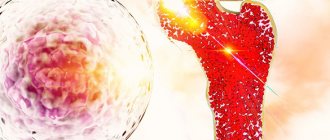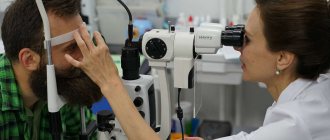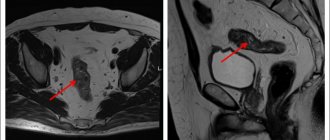How the first chemotherapy goes is one of the most common questions from patients and their loved ones. Chemotherapy (CT) is no less frightening than the malignant process itself and adds negativity to the perception of one’s disease. They are afraid of complications, but the main thing is the unknown of the immediate reaction and the long-term result - in case the torment turns out to be in vain.
- How is chemotherapy carried out?
- Preparing for chemotherapy
- Regimen and time of taking medications
- Duration of chemotherapy course
- Number of chemotherapy courses and side effects
- Is it possible to interrupt the course?
- Break between chemotherapy courses
- 1st course of chemotherapy
How is chemotherapy carried out?
Chemotherapy involves the use of cytostatics, but in practice this is the name given to any antitumor drug treatment, including the use of targeted and immuno-oncological drugs. Which is logical, since they are combined in regimens with cytostatics, complement chemotherapy courses, and replace cytostatic drugs when they are ineffective.
The choice of the regimen and the drugs included in it is determined by the localization of the malignant process; breast cancer and gastric carcinoma are treated differently. Medicines are selected according to the morphological structure of the tumor, that is, squamous cell carcinoma and lung adenocarcinoma are not equally sensitive to drugs.
There are many different ways to administer chemotherapy:
- intravenous infusions - usually called an “injection into a vein”, when the drug is injected into a vein with a syringe in a small dilution;
- Intra-arterial infusions differ from intravenous infusions not only in the vessel, but also in the greater technical complexity of administration into an artery with high pressure; as a rule, very high doses of chemotherapy are delivered to a certain anatomical area in this way;
- intravenous drip infusions involve the introduction of the drug into the bloodstream in good dilution and at a low speed; one of the modern options is many hours and even many days of injection of the drug with a special pump - an infusion pump;
- intracavitary chemotherapy - injection of a cytostatic into the pleural and abdominal cavity, including prolonged irrigation of the cavity during surgery against the background of hyperthermia;
- intravesical instillations - a variant of intracavitary chemotherapy, when the medicine is injected into the bladder;
- subcutaneous and intramuscular injections are used very rarely due to the local irritating effect inherent in most cytostatics;
- local application - cytostatic in the form of an ointment;
- Oral chemotherapy is the ideal method of treatment when tablets or capsules are taken; unfortunately, the majority of chemotherapy drugs are available in powders for dissolution or ready-made solutions.
Rules for the administration of antitumor drugs
The most widely used is intravenous administration of antitumor drugs. In this case, the doctor must take into account the individual characteristics of the patients’ veins.
- the administration of antitumor drugs should be performed only in departments specializing in cytotoxic chemotherapy;
- nurses must undergo special training to perform work with cytostatics;
- it is necessary to observe the sequence and speed of drug administration, take into account the chemical properties of drugs when using equipment for their administration;
- comply with the rules and shelf life of drugs, both in pharmaceutical packaging and after their preparation;
- You cannot mix drugs “in one bottle” unless there are special instructions for this in the instructions for use of these drugs.
- the preparation of injection solutions must be carried out in a sterile box;
- needles, syringes, vials, ampoules and remnants of unused drugs must be destroyed;
- butterfly needles should not be used for infusion of chemotherapy drugs that have a blister effect; it is preferable to use peripheral catheters of the “brownull” type;
- for vesicant drugs with a long infusion period (12 hours or more), it is preferable to use central venous access—installation of a port system.
Preparing for chemotherapy
A prerequisite for starting any chemotherapy in any patient is morphological verification of the malignant process, that is, a piece of the tumor obtained during a biopsy or during surgery is studied under a microscope, the disease is classified and it is proven that it is definitely a malignant process. In doubtful cases, when there is no 100% certainty that it is cancer, sarcoma, melanoma, leukemia, etc., chemotherapy cannot be performed.
The patient approaches the first course of chemotherapy fully examined, if preoperative or neoadjuvant chemotherapy is planned, or having already received radical treatment in the form of surgery at the first stage, supplemented, if necessary, with prophylactic or adjuvant chemotherapy.
A patient will be considered examined when:
- all zones of localization of the tumor process and the sizes of nodes were determined;
- the state of the cardiovascular and respiratory systems, the central nervous system and the gastrointestinal tract has been clarified - there is an understanding of the objective state of the body, the scope of functions and limitations of other organs allows for therapy of a certain combination and duration;
- in biochemical and clinical blood tests, urine analysis, all indicators are normal, that is, there is no evidence of insufficient functionality and hidden pathological conditions;
- For some malignant processes, information about the concentration of tumor markers is necessary, which will subsequently make it possible to evaluate the effectiveness of therapy.
Since many cytostatics negatively affect hematopoiesis, a blood test for leukocytes and platelets should be “first fresh” - no later than a week.
Adjuvant and neoadjuvant chemotherapy for oncology
Answering the question: “What is chemotherapy for cancer ?” –
we should consider its main types, which are used in global oncological practice to prevent the development of cancer.
Chemotherapy oncologists distinguish the following types of chemotherapy treatment:
- adjuvant chemotherapy;
- neoadjuvant chemotherapy;
- curative chemotherapy.
Each type of chemotherapy has its own goals and objectives, so the selection of treatment is carried out based on each specific clinical case. Thus, adjuvant chemotherapy for cancer is recommended for patients, depending on the morphology of the tumor and the stage of the disease, who have undergone surgery to remove tumors. The goal of such therapy is to reduce the risk of disease progression - the appearance of new metastases, as well as to prevent relapses of the disease.
Thus, it is obvious what chemotherapy for oncology gives in this case: reducing the risk of re-development of the pathology, which is so feared by both the patients themselves and oncologists, whose arsenal does not always have effective methods of treating even more dangerous and fleeting recurrent cancer.
In addition, patients are often prescribed neoadjuvant chemotherapy for cancer, which is carried out before surgical treatment of the tumor. The purpose of such “chemistry” is to reduce the size of an inoperable tumor or, for example, to perform an organ-preserving operation, as well as to identify the sensitivity of cancer cells to medications that will be used in the postoperative period.
In addition, there is also curative chemotherapy, which is prescribed as maintenance therapy for patients at advanced stages of the oncological process. In this case, the effect of chemotherapy on the body is to slow down the spread of the tumor and maximize the quality of life of patients suffering from cancer.
In oncological practice, combination treatment regimens are often used, in the process of compiling which chemotherapists combine the above types of chemotherapy for cancer in order to increase the effectiveness of treatment. Thus, neoadjuvant chemotherapy is often prescribed before surgery, and adjuvant chemotherapy after.
The answer to the question of whether chemotherapy helps with cancer at stage 4 is quite complex, but most experts are confident that the lack of supportive treatment can lead to severe pain, complications associated with the spread of the tumor to neighboring tissues and organs, and premature death patient.
Regimen and time of taking medications
Each drug has its own pharmacological action profile and requires a specific method of administration into the patient’s blood and an optimal dose for administration.
A single dosage is calculated per kilogram of the patient’s weight or per skin surface. To achieve a sufficient cyclic dose, some medications must be taken every day for several weeks, some may need to be administered once a week, and some may need to be administered once for as long as three weeks.
The duration of chemotherapy administration is determined by immediate toxic reactions or the best result of the effect on malignant cells. For example, a three-hour dropper with a platinum derivative “mitigates” kidney damage, and an hour-long administration of gemcitabine showed maximum effectiveness compared to a syringe injection.
Chemotherapy: types by coloring of medications
Medicines used in chemotherapy are divided according to the color of their components.
Taking this into account, the following types of chemotherapy can be distinguished:
- The red version is the most aggressive and toxic to the body. Injected drugs of the antacycline subgroup can cause a decrease in immune barriers and anti-infective protection. A properly selected treatment regimen destroys malignant cells and prevents their further reproduction and spread. Breaks between courses are required so that the patient’s body is cleansed of toxins and restored.
- The yellow version is the most gentle anti-cancer drugs, easier to tolerate by patients. After their administration, the patient’s body requires less time to recover.
- The white version is based on medications such as Taxol or Tacosel.
To increase the effectiveness of treatment courses, doctors usually recommend polychemotherapy in combination with other methods.
If we talk about the drugs used in the Onco.Rehab clinic, it should be noted that at the end of 2021, the purchase of original drugs amounted to more than 80% (in financial terms). Among them:
- Vemurafenib (Zelboraf)
- Dabrafenib (Tafinlar) + Trametinib (Mekinist)
- Lenvatinib (Lenvima)
- Lapatinib (Tyverb)
- Abiraterone
- Axitinib
- Vandetanib
- Vismodegib
- Crizotinib
- Olaparib
- Enzalutamide
- Osimertinib
- Sunitinib
- Trastuzumab
- Pertuzumab
- Regorafenib
- Sorafenib
- Everolimus
- Ceritinib
- Nintedanib
- Palbociclib
- Ribociclib
Duration of chemotherapy course
A course of chemotherapy consists of several cycles, where the cycle involves the administration of a certain combination of drugs - a regimen in a certain dose and at certain intervals, if a total dose is required. So a cycle is considered to be 14 days of oral administration of capecitabine, five injections of vinorelbine once a week, or the administration of two drugs at once - paclitaxel and doxorubicin - in one day.
Several such cycles constitute a course or one line of chemotherapy. The optimal duration of the course with the number of cycles is determined in clinical studies, which take into account not only the percentage of best results, but also the accumulation of toxicity - the cumulative effect.
Consequences
Chemotherapy is not only positive dynamics, when tumor growth stops and destruction occurs, but also side effects that occur in different patients to varying degrees of severity. In most cases, hair loss, nausea, dizziness, vomiting, loss of appetite, disruption of the gastrointestinal tract, and changes in blood counts are noted. After the end of treatment, the side effects disappear over time, the hair grows back, nausea and other unpleasant consequences disappear. If severe side effects develop, the doctor reduces the dose of the drug or cancels chemotherapy. The most aggressive is considered red chemotherapy, which combines several drugs with intense effects.
Number of chemotherapy courses and side effects
The courses are carried out until we can hope to reduce the malignant tumor. Like tumor reduction, stabilization of the cancer process also indicates the benefit of treatment and indicates the destruction of the population of cells sensitive to cytostatics. Progression of the process during treatment is evidence of the ineffectiveness of chemotherapy and the need to change the combination of drugs.
The standard combination proposed for first use is the most effective for a given cancer structure and not the most aggressive. The second recommends a less effective treatment regimen, the third recommends an even less useful one. For most malignant processes, three lines of treatment have been developed, that is, with one benefit or another, three courses of chemotherapy from several cycles can be carried out; further therapy is unpromising and definitely promises side effects, but not a positive result.
When in the first cycles of several lines of chemotherapy the tumor shrank and then resumed growth, the cells can be considered sensitive and there is reason to use the fourth or fifth lines.
Side effects and depletion of the body's resources to repair chemotherapy damage can limit the continuous change of lines. So, with each cycle of chemotherapy, it takes longer for hematopoiesis to be restored, the damage to the kidneys and peripheral nerves becomes more pronounced, and it becomes more and more difficult for the liver to fight intoxication.
Only nausea and vomiting, which frightens everyone today, is a completely preventable side effect, which the specialists of our clinic successfully cope with, because they use not only strong antiemetics, but also a whole program of preparation and support for chemotherapy.
Is it possible to increase the effectiveness of chemotherapy?
The search for the main directions for increasing the effectiveness of tumor therapy is carried out in different directions:
- development of new types of drugs, in particular targeted therapy, selectively acting on tumor cells;
- development of the combined use of two or more drugs - polychemotherapy;
- improvement of chemotherapy as a stage of combined treatment of tumors;
- the use of other medications to reduce the side effects of chemotherapy;
- refinement of methods for using drugs - dosage, regimen.
1st course of chemotherapy
The first course will definitely end, and it is absolutely certain that it will not go as the patient expected. Chemotherapy drugs kill not only cancer cells, but also normal ones, so it is impossible to predict tolerability; the result achieved as a result of treatment is much more important. The tolerability of the next cycle will differ from the previous one, because the range and frequency of complications is affected by the state of health and mood, weather and quality of medications, time of year and state of digestion, and much more.
Clinical studies have revealed the optimal course for starting treatment, but this does not mean that in a particular patient the first chemotherapy will be the most effective; it is quite possible that the second or even third course will give better results.
The sensitivity of malignant cells to drugs is very individual; the analysis performed at Euroonko helps to predict it. The likelihood of complications developing is known, but it is impossible to say what they will be and whether they will occur at all. However, at Euroonko, an individual chemotherapy support program is calculated for each patient, which helps to undergo treatment with the least possible damage to health and the best possible result.
Book a consultation 24 hours a day
+7+7+78
Cancer is the most insidious disease in the world with millions of deaths annually.
Oncological diseases are a whole group of pathologies that are characterized by the formation of cancer cells that destroy the immune system and completely destroy the body.
Cancer diseases are one of the most insidious diseases in the world: every year they claim the lives of millions of people of different sexes and ages. That is why the entire global medical community is working to resolve issues related to the development of effective cancer treatment regimens. Scientists around the world are engaged in continuous scientific activity, during which new drugs are created and effective methods of cancer treatment are developed, one of which is chemotherapy for cancer. At the moment, one of the most reliable methods of treating cancer is chemotherapy, which is selected individually, depending on the characteristics of the specific tumor and the patient’s health status. The term “ cancer chemotherapy ” in medicine refers to the use of cytostatic drugs that penetrate the cells of a malignant tumor and destroy their structures.
With the advent of cytostatic drugs in oncological medicine, a real breakthrough occurred: courses of chemotherapy for cancer help to significantly slow down the rate of division of pathogenic cells and minimize the growth of tumors. In the initial stages, chemotherapy together with surgery can help completely destroy the source of pathology, and if the disease is in an advanced state, cytostatics can slow down the development of the disease and prolong the patient’s life as much as possible.
How effective chemotherapy is for cancer should be judged by the specific type of oncology: there are types of malignant tumors that are treated exclusively with cytostatic drugs and their combination. For many years in oncological medicine, chemotherapy has been considered one of the most effective and efficient methods of cancer treatment.









